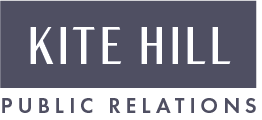Across industries, we’re seeing a rise in mergers and acquisitions (M&A) — in fact, the first half of 2024 saw almost double the number of significant adtech transactions compared to the same period in 2023 and the EY-Parthenon Deal Barometer forecasts 2024 US corporate M&A deal volume as a whole to increase by 20% by year’s end. Understanding the impact a pending merger or acquisition can have on an organization can help communicators move with agility to provide the right level of strategic support so that they can develop and deliver the right messaging to all affected internal and external stakeholders.
At Kite Hill PR, we have been behind some of the biggest M&As in tech, media and advertising, including Teads and Outbrain; Spotx and Magnite; TMB and Jukin Media; Vivvix and MediaRadar; Lucid and Cint; Tapad and Telnor and more.
Whether your company is still in the early stages or you’re ready to announce, these tips can help you create a dynamic communications strategy when devising an M&A announcement:
1. Ahead of the announcement, define your narrative, and ensure messaging addresses all affected stakeholders.
Begin by asking yourself: when are you announcing the merger or acquisition and how? Who needs to be informed from the first stage? What messaging can you prepare in advance for external stakeholders and media, as well as internal stakeholders i.e. employees, clients, etc.? What is the rollout communications strategy to inform parties?
Aligning on and outlining these details before any next steps are taken can be a crucial part of the planning process. Don’t skip it — ensuring all necessary stakeholders are involved from the beginning can help decrease any confusion or uncertainty throughout the process.
While it may be tempting to want to avoid the tough questions and answer them on a need-to-know basis, that’s not practical. Work closely with the executive and legal teams to build a list of any and every hard question that may be asked and prepare answers in an FAQ doc that can be circulated across the company to key executives.
The media, in particular, will be interested in the origin of this deal and how it came to be, and they may also want to dig deeper into the business strategy (such as financial aspects or employee security, etc.). Employees will likely want to know how this business deal affects them and their job security. Clients will likely want to ensure their business won’t be negatively affected by the deal. Be prepared to address these questions head on.
2. Prepare your spokespeople. Consider having a spokesperson from each side of the deal and arm them with clear and consistent messaging.
Your spokespeople likely understand the nature of the deal, but do they know how to communicate it?
During any M&A announcement, spokespeople have an important role to not only tell the story but also reassure employees, clients, and other stakeholders as to why this is beneficial. Ensure your spokespeople are prepared via proper messaging development (ie. do they have a media FAQ, a client FAQ, a Town Hall script to address employees?). Offer to conduct media training sessions and practice runs ahead of the big reveal.
3. Leverage multiple channels of communication when a deal is announced.
Don’t put all your eggs in one press release basket.
This is the time to leverage earned, owned and shared channels. Publish blog posts and articles on the company website and social media channels, discussing the acquisition and its implications for the industry.
Issue a joint press release announcing the acquisition. Hold a media briefing to provide more details about the transaction and answer questions from reporters.
Make your communications on the announcement clear and in alignment across all channels to ensure you’re reaching all intended audiences.
4. Continue the conversation in the media by highlighting the importance of the deal and the positive impact on the combined customer base.
Leverage your own success stories by developing a series of case studies and white papers that demonstrate the value of the two company's now combined solutions.
Conduct outreach to key industry analysts and influencers to brief them on the acquisition and gather their insights.
Offer key reporters valuable face time with the spokespeople from each company leading the efforts around the deal.
While there are many elements to preparing when it comes to M&A, an effective communications strategy should be a top priority. In the midst of uncertainty, information should help reassure people and be shared as available through the proper channels.
Want to discuss further? Reach out to hello@kitehillpr.com. We’re here to support you!

